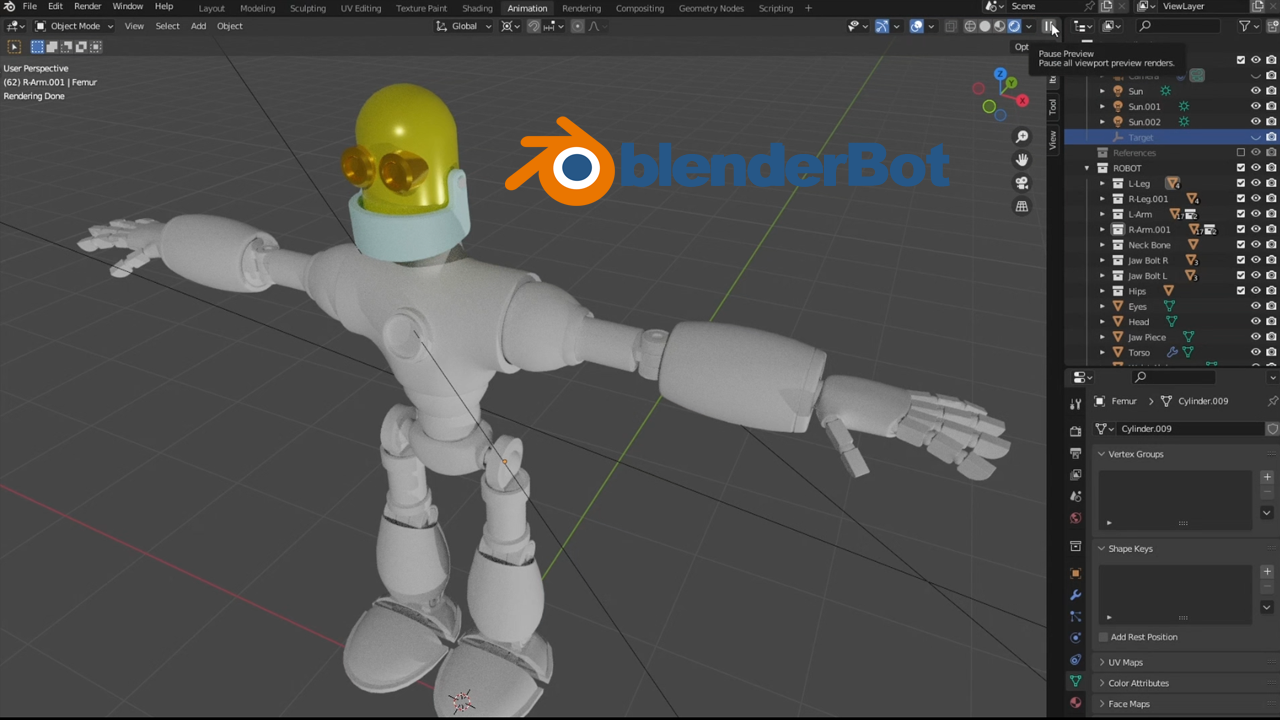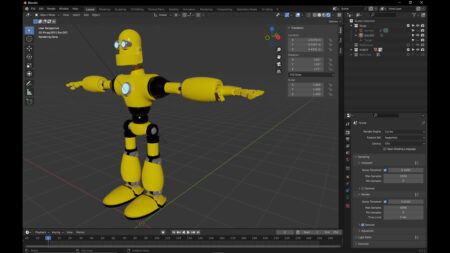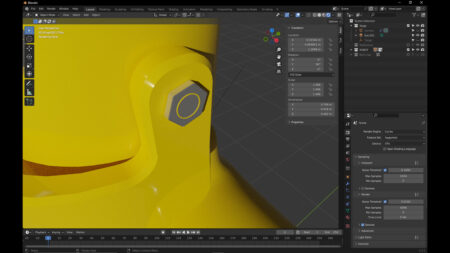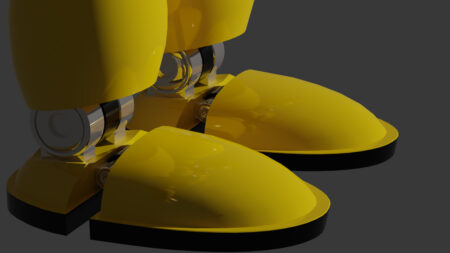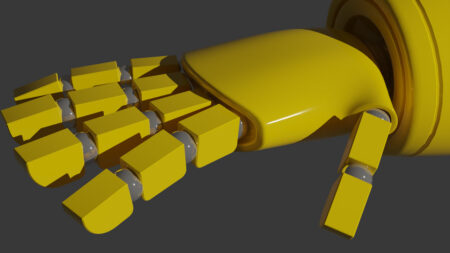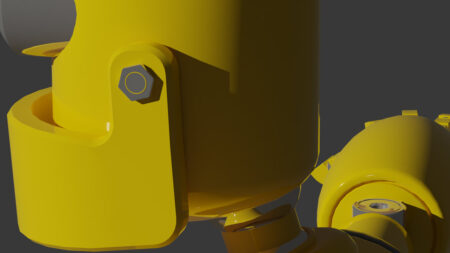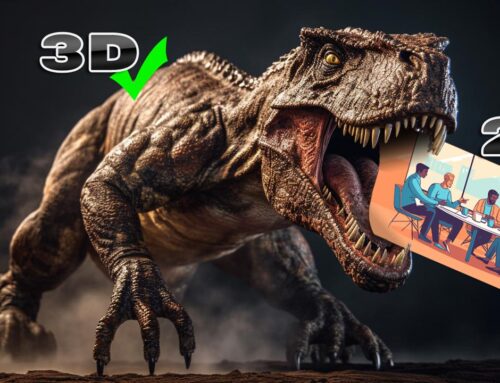What is Blender 3D?
Blender 3D is a highly regarded, open-source 3D creation suite that supports the entire 3D pipeline. From modeling and rigging to animation and rendering, this software is a dynamic tool for beginners and professionals alike. This article delves into the world of Blender 3D, providing an in-depth look at its features, functions, and the impact it has made in the realm of 3D creation.
Whether you’re an artist, animator, game designer, or enthusiast, you’ll uncover the many ways Blender can enhance your creative process. We’ll delve into the nuances of its user interface, the specifics of its modeling tools, its powerful animation capabilities, and the flexibility of its rendering engines. Additionally, we’ll discuss the growing and vibrant community that surrounds Blender, as well as how to join and contribute to it.
Through engaging descriptions and industry-specific terminology, we’ll provide detailed, accurate information, backed by statistics, research, and expert opinions. By the end of this comprehensive exploration, you’ll have a solid understanding of what Blender 3D is, why it’s a favorite among 3D artists, and how it could possibly transform your creative endeavors.
Table of Contents
- 1. Overview of Blender 3D
- 2. User Interface
- 3. Modeling Tools
- 4. Animation and Rigging
- 5. Rendering Engines
- 6. Community and Contributions
- 7. blenderBot, My Learning Project
- Frequently Asked Questions
- Final Thoughts
- Sources
1. Overview of Blender 3D
Blender 3D is a potent suite of tools that span the entire 3D creation process, enabling artists, animators, game developers, architects, and visual effects creators to realize their visions in 3D form. This robust, free, and open-source software supports the complete 3D pipeline — modeling, rigging, animation, simulation, rendering, compositing, motion tracking, and even game creation. It is unique in its offering as a software solution that encompasses such a broad range of applications while remaining entirely free and open-source.
First conceived in 1994 by Ton Roosendaal, a Dutch software developer, Blender was initially an in-house tool for his animation studio, NeoGeo. Its strengths were quickly recognized, and in 1998, the software was made available to the public as a free tool. It was a pioneering moment in the world of digital 3D creation, marking one of the first times such a comprehensive tool was made freely accessible to anyone with a computer.
Since its initial release, Blender has seen steady growth and development. In 2002, the non-profit Blender Foundation was established to provide a formal structure for Blender’s development, supporting its growth and nurturing a community of contributors. Today, the Blender Foundation coordinates a global effort of developers who continuously improve and update the software, maintaining its position at the forefront of the 3D digital art field.
In its current state, Blender 3D is a sophisticated tool that is capable of creating high-quality 3D assets. It’s used by individuals and organizations across a broad spectrum of fields — from independent artists creating digital sculptures, game developers crafting immersive virtual environments, to film studios producing animated movies. Blender has been utilized in the production of numerous award-winning short films and has played a role in the visual effects work for several Hollywood movies.
Despite its comprehensive range of features, one of Blender’s most significant strengths is its community. With its open-source nature, Blender has fostered a global community of users who not only use the software but actively contribute to its development. This includes everything from coding new features, improving existing ones, reporting bugs, creating tutorials, and contributing to the software’s documentation. This active community continually helps to improve the software, making Blender not only a tool but a collaborative project fueled by its users.
Bottom line, Blender 3D is a very powerful, comprehensive, and open-source 3D creation suite that continues to push the boundaries of what is possible in 3D digital art. Its commitment to providing a free and open tool for 3D creation democratizes access to 3D digital art, making it accessible to anyone, regardless of their financial means.
2. User Interface
Blender’s user interface (UI) is designed with efficiency and ease-of-use in mind, catering to both new and experienced users. It is flexible and customizable, allowing artists to configure the layout, colors, size of elements, and even input controls according to their specific needs and preferences.
The default layout consists of a series of panels, known as “editors,” each with a unique purpose in the 3D creation process. These include the 3D Viewport for interacting with objects in a 3D space, the Timeline for controlling animation keyframes, the Outliner for managing scene objects and data, the Properties panel for adjusting object characteristics, and more.
The 3D Viewport, which usually takes up the most screen real estate, is where the bulk of the 3D modeling, animation, and rendering tasks take place. It is here that users can directly interact with their 3D objects and scenes. The viewport supports a variety of shading modes, including wireframe, solid, texture, and rendered, giving artists flexibility in how they visualize their work.
On the other hand, the Image Editor, Node Editor, and UV Editor are essential for texturing, compositing, and unwrapping 3D models. The Image Editor lets artists paint directly onto the texture of a model or view rendered images. The Node Editor is for setting up and tweaking material, compositing, and texture nodes, while the UV Editor is for unwrapping the 3D model into a 2D space for more detailed texturing.
Blender’s UI also has tools for scripting and automation using Python. These tools, including the Python Console and the Text Editor, allow users to write, edit, and run scripts that can automate repetitive tasks, create custom tools, or even modify the functionality of Blender itself.
The UI design is scalable and works well on high-resolution monitors, including 4K displays. Blender’s UI also supports multi-window and multi-monitor setups, allowing artists to distribute panels and editors across multiple screens.
One of the recent improvements in Blender’s UI is the Workspaces feature. Workspaces are pre-set arrangements of editors that cater to different stages of the 3D creation process, such as modeling, sculpting, animation, or compositing. This feature allows artists to switch effortlessly between different tasks while keeping a clean and uncluttered workspace.
Blender’s user interface, while packed with features and tools, remains user-friendly and highly customizable. It supports an extensive array of tasks, all the while maintaining a streamlined, efficient workflow for artists. Whether you’re a beginner or a seasoned pro, Blender’s UI is designed to cater to your needs and make the process of 3D creation as smooth as possible.
3. Modeling Tools
Blender’s capabilities as a 3D modeling tool are highly extensive and versatile, making it a go-to choice for artists, hobbyists, and professionals in the field. The software’s range of modeling tools allows for a myriad of possibilities, from the creation of simple geometric shapes to highly complex organic structures and environments.
At the heart of Blender’s modeling toolset is its powerful mesh editing capabilities. Users can start with basic shapes, known as primitives, such as cubes, spheres, and cylinders, and manipulate them using an array of transformations such as scaling, rotating, and moving. These transformations can be applied to whole objects or to the vertices, edges, and faces that make up those objects.
For more detailed and complex modeling, Blender provides a rich set of editing tools such as extrusion, beveling, and loop cutting. The extrude tool, for instance, allows artists to pull new geometry out from existing faces, edges, or vertices, while the bevel tool can be used to create rounded corners and edges.
Blender also includes a feature-rich sculpting mode, which turns the software into a digital clay sculpting tool. With a range of brushes and settings, users can add intricate detail to their models, mimicking the subtleties of real-world textures and forms. This sculpting mode also supports dynamic topology, which automatically adds or removes mesh detail as needed, allowing artists to focus purely on the sculpting process without worrying about the underlying geometry.
Another standout feature of Blender’s modeling toolset is the extensive range of modifiers. Modifiers are automated operations that dynamically alter an object’s geometry in various ways, without permanently affecting the original mesh. These include modifiers for tasks such as subdivision (for smoothing and refining a mesh), Boolean operations (for merging, intersecting, and subtracting meshes), mirror modeling (for creating symmetrical models), and many more.
Blender’s modeling toolkit also includes advanced features like retopology tools for optimizing mesh topology, UV mapping tools for creating 2D texture coordinates, and procedural modeling tools for creating complex shapes and patterns through mathematical functions.
Moreover, Blender is extensible with Python scripting, allowing users to create custom modeling tools and functions for specialized tasks.
Overall, Blender’s robust set of modeling tools and features provide artists with everything they need to create detailed, intricate 3D models. From basic transformations to advanced sculpting and procedural techniques, Blender’s modeling capabilities cater to all levels of complexity, enabling artists to bring their creative visions to life.
4. Animation and Rigging
Blender provides a comprehensive set of features for animation and rigging, allowing artists to bring their creations to life with intricate movement and dynamism. These features cater to a wide array of animation styles, from realistic, physics-based movement to stylized, cartoony motion.
Rigging in Blender is facilitated through its powerful armature system. An armature is a skeleton-like structure made up of bones, which can be linked to the mesh of a model in a process called skinning. Once an armature is skinned to a model, moving the bones of the armature will deform the model in a natural way, similar to how our muscles move with our bones. This is the basis of character rigging and is fundamental for animating characters.
Blender’s rigging system is enriched by a robust set of constraints and modifiers, allowing for complex and realistic movement. For instance, Inverse Kinematics (IK) constraints can be used to control a chain of bones by specifying a goal position for the end bone, and the software calculates the appropriate rotation of the other bones in the chain. This is particularly useful for animating walk cycles, where the feet need to stay in contact with the ground while the rest of the leg moves.
On the animation front, Blender uses a keyframe system, a method ubiquitous in 3D animation. Artists define the start and end points of an animation, and Blender interpolates the in-between frames. This can be applied to almost any property in Blender, including object location, rotation, scale, colors, textures, and more.
For fine-tuning animations, Blender offers powerful tools like the Graph Editor and the Dope Sheet. The Graph Editor displays animation data as curves, representing the change of a property over time, providing an intuitive interface for adjusting timing and easing. The Dope Sheet gives a broader view of all the keyframes in a scene, making it easier to coordinate the timing of multiple actions.
Blender also supports shape key animation, which allows for the deformation of objects for effects such as facial expressions. By defining different “states” of an object, Blender can interpolate between these states for smooth transitions, making it particularly useful for animating complex deformations that can’t be effectively achieved with armature rigging alone.
Moreover, Blender provides a non-linear animation (NLA) editor, allowing for the reuse and recombination of actions, which can significantly speed up the animation process for complex scenes.
Blender’s capabilities also extend to physics-based animation. It includes a robust particle system, fluid and smoke simulations, soft body and rigid body dynamics, cloth simulation, and hair and fur modeling.
Whether you are creating a simple animated logo or a feature-length animated film, Blender’s comprehensive suite of tools for animation and rigging offers everything you need. Its blend of ease-of-use and power makes it an ideal choice for artists and animators at all levels.
5. Rendering Engines
Blender 3D provides two main rendering engines: Eevee and Cycles, each offering unique capabilities that cater to different visualization needs and use cases.
Eevee is Blender’s real-time rendering engine, optimized for speed and interactivity. Designed with the same principles as a game engine, Eevee uses rasterization to render images nearly instantaneously, making it an excellent choice for previewing scenes and creating stunning visualizations in significantly less time than traditional rendering. Eevee supports a wide array of features, including physically-based shading, reflections, refractions, depth of field, volumetrics, screen-space reflections, and indirect lighting with light probes.
This real-time engine is highly valuable for artists who require immediate feedback on their work, such as during shading and lighting. Eevee is also becoming a viable option for final renders for animations, particularly for projects with tight deadlines or for artists who don’t have access to high-powered rendering hardware.
Cycles, on the other hand, is Blender’s physically-based, unbiased rendering engine. Unbiased means it simulates light transport in a physically accurate way, which results in highly realistic, photorealistic images. Cycles traces the paths of millions, sometimes billions, of light rays as they bounce around the scene, capturing the subtle interplay of light and shadow, reflections, refractions, and color bleed between objects.
While Cycles produces more realistic results, it requires more computational power and longer rendering times than Eevee. To mitigate this, Cycles can leverage both CPU and GPU acceleration, using the power of modern graphics cards to speed up rendering times. It also supports out-of-core rendering, which allows it to use system RAM when the graphics card memory is full, enabling the rendering of large, complex scenes.
Cycles provides a highly flexible shading system, which includes a node-based material editor for creating intricate, detailed shaders. It supports a vast array of features, including subsurface scattering for realistic skin and wax materials, motion blur, depth of field, hair rendering, volumetric effects, and more.
In addition to Eevee and Cycles, Blender also includes a simpler rendering engine called Workbench. This engine is primarily intended for layout, modeling, and previewing purposes. It offers a set of visualization options, such as solid, texture, and wireframe modes, that can be tailored to the task at hand.
In summary, whether you’re aiming for quick, interactive previews, stylized non-photorealistic art, or photorealistic final renders, Blender’s rendering engines have got you covered. The flexibility and range of options available make it a powerful tool for a wide array of 3D visualization tasks.
6. Community and Contributions
One of Blender’s most significant strengths is the vibrant and active community that surrounds it. This community plays a crucial role in Blender’s development and evolution, contributing in a myriad of ways. Contributions range from coding and bug fixes to creating educational content and artwork, which showcase Blender’s capabilities.
Blender’s open-source nature attracts a diverse group of contributors, including programmers, artists, educators, and enthusiasts. Programmers contribute by developing new features, optimizing existing code, and fixing bugs. Artists contribute by testing these features, providing feedback, and creating stunning artworks and animations that help promote Blender. Educators contribute by creating tutorials, guides, and documentation, helping newcomers to learn and understand the software.
One of the most significant community-led contributions is the Blender Development Fund, a crowdfunded project that supports the hiring of developers to work full-time on improving Blender. As of my knowledge cutoff in September 2021, the Blender Development Fund had already raised substantial funding, enabling the Blender Foundation to hire a considerable number of full-time developers. This has greatly accelerated Blender’s development, leading to faster release cycles and continual improvements.
Another key contribution from the community is the wealth of educational resources available. Numerous online platforms, YouTube channels, and personal blogs are dedicated to providing high-quality, free (or low-cost) Blender tutorials and guides. These resources cater to a range of skill levels, from beginner to advanced, covering almost every aspect of Blender’s functionality.
Furthermore, the Blender community hosts a number of challenges and events, both online and in-person. These include the annual Blender Conference, online animation and modeling challenges, and regional user group meetups. These events provide opportunities for networking, learning, and showcasing the work created using Blender.
Lastly, it’s worth noting that the Blender community also contributes to the software’s widespread adoption. Many professional studios, particularly in the animation and visual effects industries, have adopted Blender due in part to its active community, rapid development pace, and the availability of talented artists familiar with the software.
To conclude, Blender’s community is an indispensable part of what makes the software what it is today. Their contributions have helped shape Blender into a powerful, user-friendly tool that is constantly evolving and improving. The active participation and enthusiasm of the Blender community illustrate the strength of open-source software and how a diverse group of individuals can come together to create something truly remarkable.
7. blenderBot, My Learning Project
Working on a Blender3D tutorial by Gustavo Rosa of a toy robot animation. I’m modeling the left leg and then mirroring the left arm and left leg. Can’t wait to get to the rigging, Gustavo’s walk cycle animation is very smooth, that’s the reason I bought his training.
blenderBot takes life after a fresh coat of yellow… next round is rigging for animation.
Frequently Asked Questions
Final Thoughts
Blender 3D is more than just a 3D creation tool—it is a testament to the power of collective effort in software development and the democratization of creative technology. Its vast array of features, the flexibility it offers, and the supportive community it has nurtured have made it an invaluable resource in the world of digital art and design. Whether you are an aspiring artist or a seasoned professional, Blender 3D offers a comprehensive suite of tools that can cater to your creative needs, and the best part is—it’s absolutely free.



